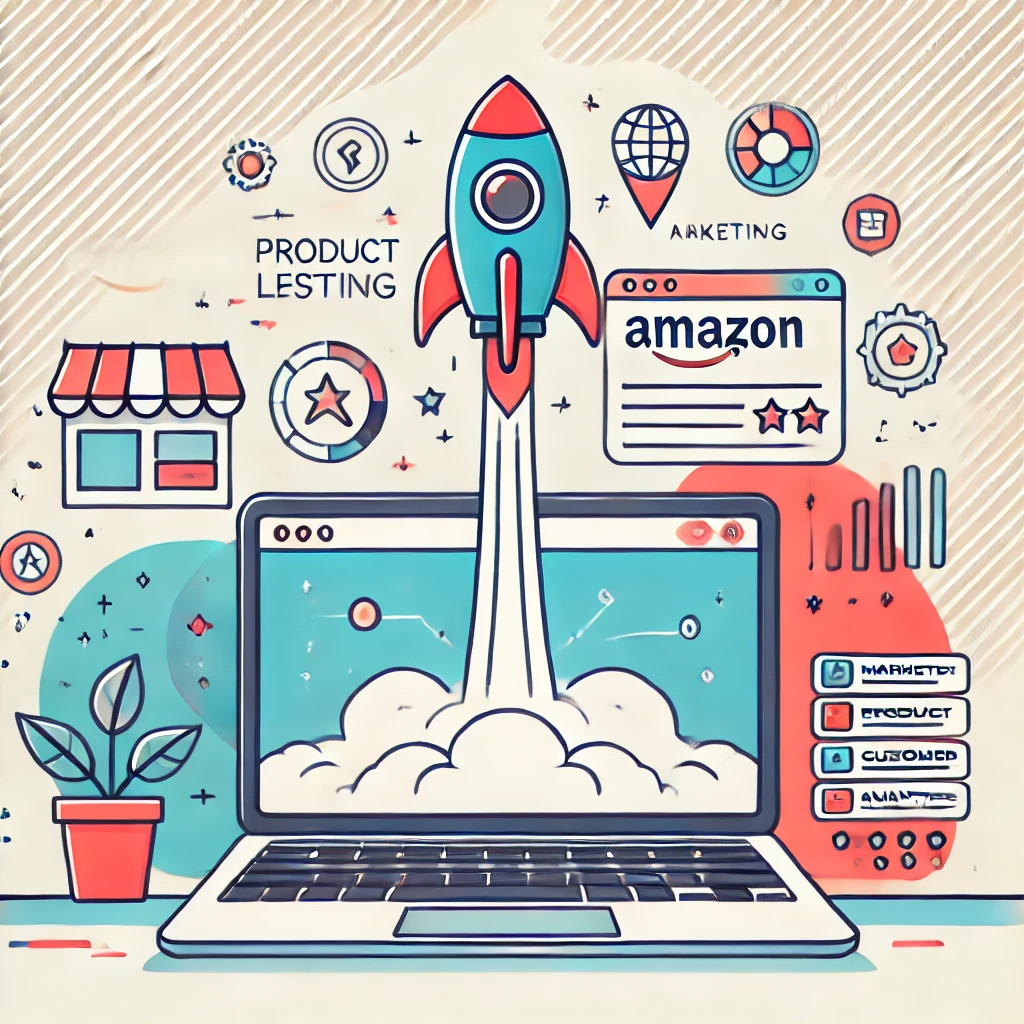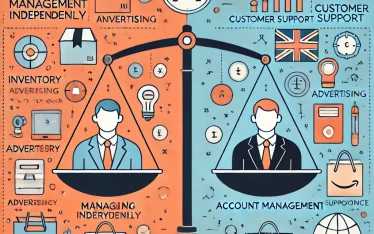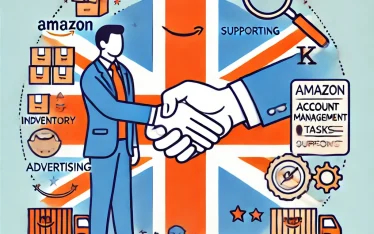TL;DR:
- Research and validate product demand before investing.
- Find a reliable supplier and order samples first.
- Optimize listings with strong images and keywords.
- Use Amazon PPC ads to drive early traffic.
- Get customer reviews legally for better rankings.
- Track sales and improve strategies over time.
Launching a product on Amazon is a big opportunity, but it requires careful planning and execution. Amazon is one of the biggest eCommerce platforms, meaning there is a lot of competition. To stand out, you need a strong product launch strategy. In this step-by-step guide, we’ll walk you through everything you need to do to launch a successful product on Amazon.
Step 1: Research and validate your product idea
Before you invest in a product, you must confirm that there is enough demand for it. The last thing you want is to stock up on a product that no one wants to buy. Here’s how you can do that:
- Check Amazon Best Sellers – Browse Amazon’s Best Sellers page to see what is trending. This can give you insights into high-demand products.
- Analyze competitors – Look at the top sellers in your niche. Pay attention to their pricing, product features, and customer reviews. Identify gaps you can fill.
- Use keyword research tools – Tools like Helium 10 and Jungle Scout can help you find the best keywords to target. If a product has high search volume but low competition, it’s a great opportunity.
- Understand customer pain points – Read reviews of similar products. Find out what customers complain about the most and improve your product based on their feedback.
Why this step is important: You don’t want to waste time and money on a product that won’t sell. By researching in advance, you can pick a winning product with strong demand.
Step 2: Source your product
Once you’ve chosen a product, the next step is to find a reliable supplier. There are several sourcing options:
- Manufacturers (Alibaba, IndiaMart, GlobalSources): If you want to create a private-label product, manufacturers can produce items with your branding at a lower cost.
- Wholesale suppliers: These suppliers sell existing products in bulk. This is a great option if you want to resell established brands.
- Local manufacturers: Working with a local manufacturer ensures better quality control and faster shipping, though it might be more expensive.
What to do next:
- Order samples from multiple suppliers and compare quality.
- Negotiate pricing and minimum order quantities.
- Ensure the supplier can meet your demand consistently.
Why this step is important: A good supplier ensures your product quality stays high and that you don’t run into inventory shortages.
Step 3: Set up your Amazon seller account
If you don’t already have one, sign up for an Amazon Seller Central account. You can choose between:
- Individual Plan: No monthly fee but charges $0.99 per sale. Best for beginners who plan to sell a few items.
- Professional Plan: Costs $39.99/month but provides access to advanced tools like advertising and bulk listing. Ideal for serious sellers.
You’ll also need to provide:
- Business details
- Tax information
- Bank account details for receiving payments
Why this step is important: You can’t start selling without an account! Setting up your seller account is the foundation of your Amazon business.
Step 4: Choose your fulfillment method (FBA vs. FBM)
Amazon offers two ways to fulfill orders:
- Fulfillment by Amazon (FBA): Amazon stores your products in their warehouses and handles packing, shipping, and customer service.
- Fulfillment by Merchant (FBM): You store and ship the products yourself.
Most sellers choose FBA because:
- Amazon handles logistics, saving you time.
- Your products qualify for Prime shipping, increasing sales potential.
- Amazon provides customer service on your behalf.
However, FBM can be better if you want complete control over shipping or have a unique fulfillment strategy. If you’re unsure, working with Amazon FBA experts can help you make the right choice.
Why this step is important: Choosing the right fulfillment method affects costs, shipping times, and customer satisfaction.
Step 5: Optimize your product listing
A great product listing improves your rankings and increases conversions. Here’s how to optimize yours:
- Title: Include important keywords and highlight the main benefit of your product.
- Images: Use high-quality images showing the product from multiple angles. Lifestyle photos work well too.
- Bullet points: List the main features and benefits. Use short, easy-to-read sentences.
- Description: Tell a compelling story about your product. Explain how it solves a problem.
- Backend keywords: These are hidden keywords that help your product rank better in search results.
Why this step is important: A well-optimized listing increases your chances of ranking higher and getting more sales.
Step 6: Set competitive pricing
Pricing is crucial to attracting customers. Here’s how to price your product effectively:
- Research competitor prices – Find out how similar products are priced and stay competitive.
- Consider Amazon fees – Factor in referral fees, FBA fees, and shipping costs.
- Use psychological pricing – $19.99 often looks more attractive than $20.00.
- Offer promotions – Coupons and discounts can encourage buyers, especially during a product launch.
Why this step is important: If your price is too high, customers won’t buy. If it’s too low, you may not be profitable.
Step 7: Get early reviews legally
Reviews build trust and improve your product’s visibility. Here’s how to get them the right way:
- Enroll in the Amazon Vine Program (for brand-registered sellers) to get early reviews.
- Send polite follow-up emails asking customers for feedback.
- Provide excellent customer service to encourage positive reviews.
Why this step is important: Products with more positive reviews rank higher and attract more buyers.
Step 8: Launch your product with Amazon advertising
Amazon’s Pay-Per-Click (PPC) advertising is the best way to drive traffic during launch. Here’s how:
- Sponsored Products Ads: Appear in search results and product pages.
- Sponsored Brands Ads: Showcase your brand and multiple products.
- Sponsored Display Ads: Target customers both on and off Amazon.
Start with a small budget and optimize as you go. Hiring an Amazon selling specialist can help you run ads effectively.
Why this step is important: Without ads, your product may get lost among competitors. PPC boosts visibility.
Step 9: Drive external traffic
To accelerate sales, send traffic to your Amazon listing from external sources:
- Social media marketing – Use Instagram, TikTok, and Facebook ads.
- Influencer marketing – Partner with influencers in your niche.
- Google Ads & blogs – Target keywords and write content that links to your listing.
Why this step is important: Amazon rewards products that bring external traffic by improving their rankings.
Step 10: Track and optimize performance
After launch, monitor your performance using:
- Amazon Business Reports – Track sales and conversion rates.
- Keyword Ranking Tools – Ensure you’re ranking for the right search terms.
- Customer Feedback – Identify areas for improvement.
Regular optimization leads to long-term success.
Step 11: Scale and grow your brand
Once your product is doing well, focus on long-term growth:
- Launch new variations or complementary products.
- Enroll in the Amazon Brand Registry for extra tools.
- Expand to international markets.
If you need expert help, working with an Amazon consulting agency can make scaling easier.
Final thoughts
Launching a product on Amazon takes time and effort, but if you follow these steps, you’ll set yourself up for success. Research well, optimize your listing, use ads, and track your results. If you need extra help, don’t hesitate to reach out to experts in the field.








